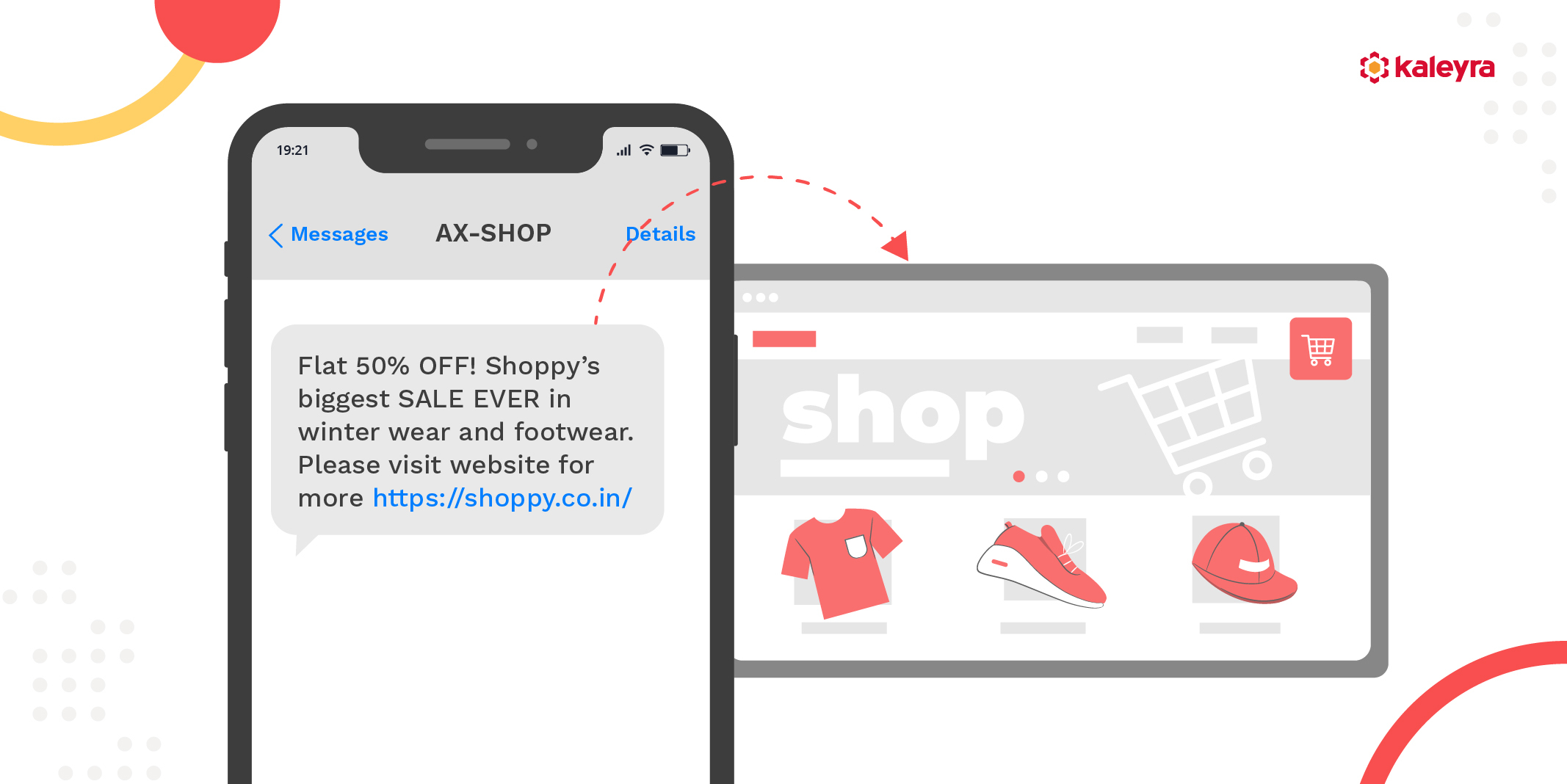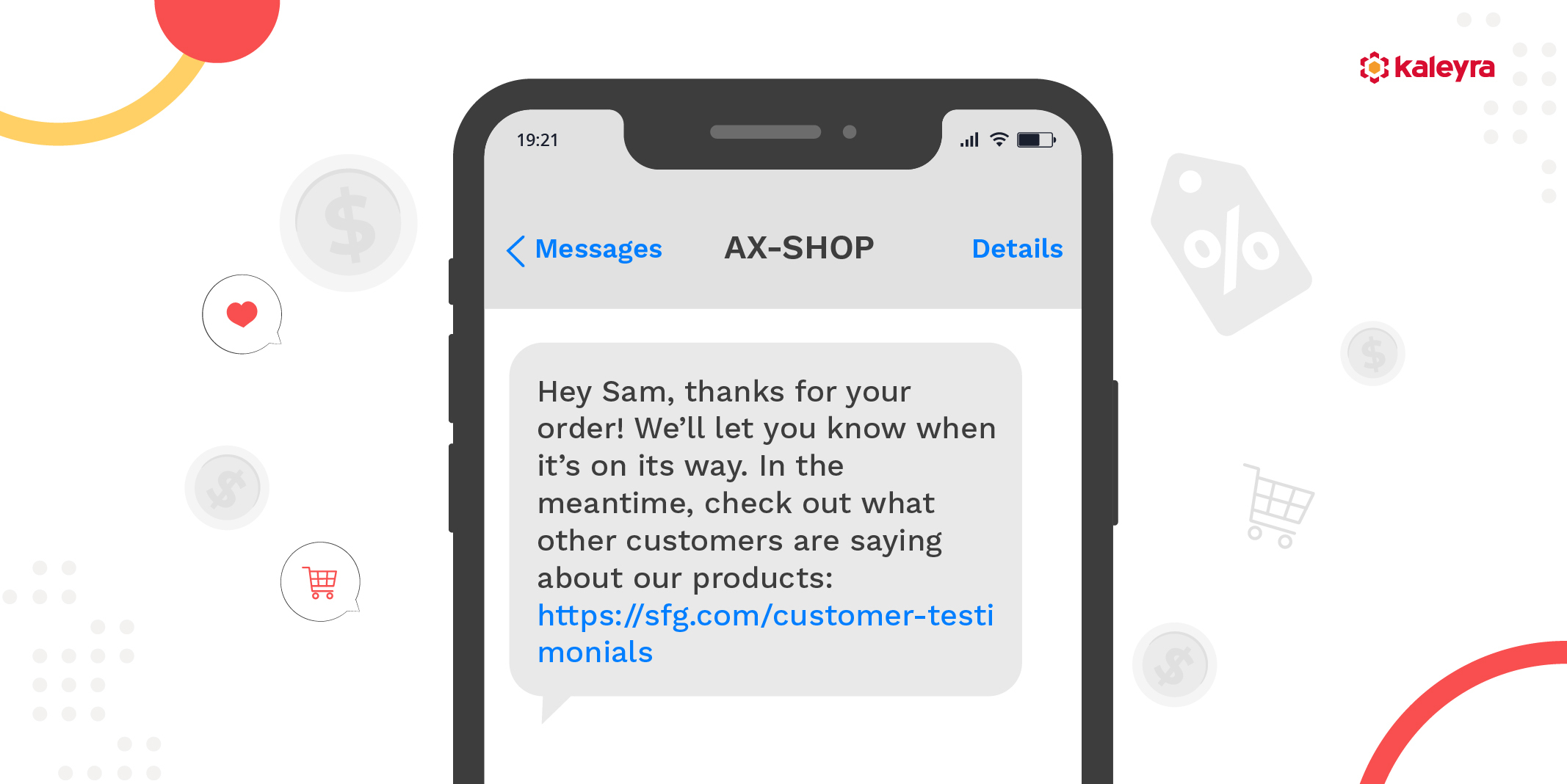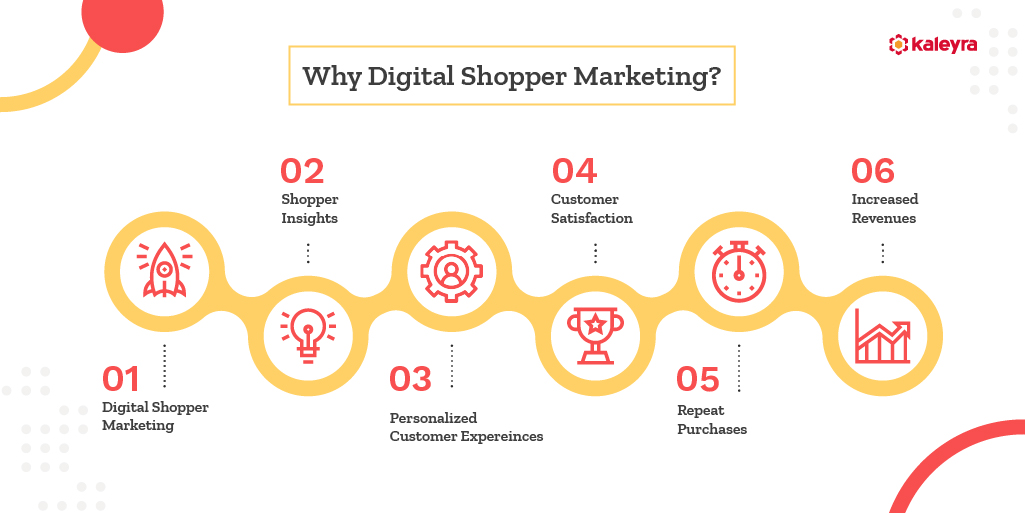6 min read
Digital Shopper Marketing Tactics to Win Over Modern Customers
What is Shopper Marketing?
Shopper Marketing is the process of enhancing the shopping experience of customers by engaging them throughout the path to purchase. It involves strategies and tactics to drive sales through customer interactions during all phases of the buying journey, namely, awareness, consideration, and conversion.
Traditional shopper marketing typically focused on selling, and the promotions were usually price-centric. However, shopper marketing is now all about mining insights. It’s about gaining a thorough understanding of the motivations behind purchase decisions and purchase patterns.
Since purchase decisions happen everywhere these days, shopper marketing involves using digital elements along with in-store strategies such as aisle promotion or temporary price reductions. From planning a purchase to applying coupons or rewards points and getting e-receipts, shopper marketing has evolved into an omnichannel approach that engages customers in-store and online.

Why use Digital Shopper Marketing?
Physical and digital retail environments are intertwined and can no longer be looked at as separate entities. The shopping experiences of modern customers span these two environments, and so should customer engagement strategies.
Moreover, shoppers now have higher expectations in experience, curation, convenience, and cost. So, brands are prioritizing personalization by using mobile campaigns to boost customer loyalty and sales.
Shoppers are also increasingly turning to digital channels to compare costs and research products before making a purchase. According to a SCORE study, only 27.5% of Gen X and 9.6% of Gen Z shoppers prefer buying in-store. Here are a few more significant retail marketing statistics that show why digital strategies are essential to engage shoppers.

Digital Shopper Marketing Tactics You Should Know
1. Frictionless commerce
Frictionless commerce refers to the discipline of simplifying purchase opportunities that allow for an easy and quick purchase. It ensures that customers can buy a product or service whenever and wherever they want with minimal clicks and steps.
A complicated route to checkout can result in shoppers abandoning carts. For example, consider sending a promotional SMS with a link that takes customers directly to the page where they can easily access the discounts. This increases the chances of the customer making a purchase because they do not have to go through a series of steps to find the products on sale. Similarly, mobile payments and coupons can go a long way in making the in-store experience hassle-free.

2. Post-Checkout Experience
Post-purchase experiences are vital for customer retention and can significantly impact repeat purchases. Customers who have positive brand experiences can go on to become brand advocates who recommend your products to others. Furthermore, continuing to engage customers after the purchase increases the chances of getting user reviews and honest feedback. The post-purchase experience can thus play a crucial role in influencing brand perception.
When a customer makes an online purchase, there’s an ‘experience’ gap before they receive the product. Sending a Thank You message after the purchase, offering timely order updates, tracking information, and ensuring ease of returns and exchanges are some ways to ensure happy customers and repeat purchases.
Engaging customers post-purchase through Whatsapp and SMS notifications can convert habitual or one-time shoppers into lifelong customers. In addition, providing personalized offers and members-only perks can help bring customers into the loyalty loop, thereby increasing customer lifetime value.

3. Immersive experiences
Imagine finding a lovely shirt while shopping and also getting real-time recommendations on how to style various outfits with it. Forward-looking brands have recognized the need to make shopping experiential. More than 75% of millennials prefer spending money on an enjoyable experience or event to buying a product or service, according to an Everbrite Study. So offering immersive shopping experiences that integrate the digital and physical world is the way to go for brands to gain a competitive edge.
Brands can leverage Interactive displays and touch screen merchandising to invite customers back to the stores. Take the example of GE Lighting, which cleverly used the interactive display to educate shoppers about its various offerings. Customers could press buttons to see various light bulbs adjusting from daytime to nighttime. The display also included a fake power outage and simulated lightning, which allowed customers to see first-hand how the battery backup feature of the lightbulb could be handy during power blackouts.
Brands can also use electronic shelf labels that can be integrated with their mobile app to send notifications and stock alerts to shoppers. For example, Kroger, a grocery chain, has experimented with a digital label solution that communicates promotions, provides nutritional information and updates real-time prices of the products to in-store shoppers.
4. Social Commerce and Shoppable videos
Social commerce refers to the buying and selling of products or services on a social media platform. As more than 50% of customers learn about new brands on social media, focusing on streamlining the mobile checkout process is critical. Moreover, social media platforms have grown from being a place for discovery to hosting the entire customer journey. While posts can attract new prospects, with social commerce, you can nudge your visitors towards a purchase and eliminate the drop-off points resulting in abandoned transactions.
Since online shoppers cannot test or try a product or service, social proof can significantly influence purchase decisions. Social media platforms are excellent places to build your reputation by showcasing reviews, testimonials, awards, and recognition. Offering a centralized location to complete the purchase and post reviews can result in a positive feedback loop, improving your bottom line.
Similarly, videos are turning out to be more than just engagement tools for brands. 84% of people said they are convinced to buy a product or service after watching a brand’s video. This is why several brands are leveraging shoppable videos as a point-of-sale.
Shoppable video platforms allow shoppers to make a purchase by clicking on embedded links on the video. If customers like what they are watching on a brand video, they can simply click to add to cart. Brands like Sephora are cashing in on the phenomenon known as “shoptainment.” For example, the makeup brand regularly posts Youtube tutorials, with products in the video available to buy in the shoppable section of the sidebar.

Delighting Customers with Tech-Driven Experiences
Brand experience is a major driving factor behind customers opting for one retailer over another. Business communication is pivotal to delivering a positive customer experience and can affect purchase behaviour and improve sales for retailers.
Kaleyra’s API-based technology enables you to deliver stellar customer experiences through SMS, Whatsapp, Video, and Voice communication. For instance, Flipkart, India’s leading e-commerce marketplace with over 100 million registered users and more than 100k sellers, use Kaleyra’s Cloud Communication platform for an efficient, automated technology-driven solution to handle their massive volume of queries related to orders and shipments. Moreover, with Kaleyra’s omnichannel platform, brands can leverage digital shopper marketing tactics and gain valuable customer insights for maximum engagement and increased revenue.
Kalaivani Narayanan
Content Specialist
